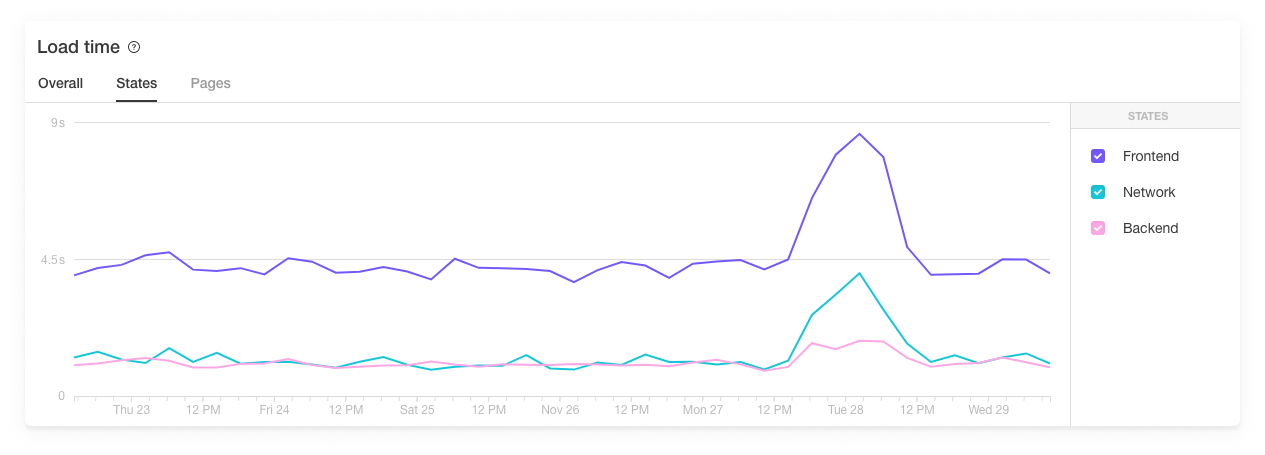Yesterday we had a close shave on our own site as we prepared to welcome the world to try Visitor Insights for themselves. This turned out to be a blessing in disguise and a perfect way to put Visitor Insights through its paces.
You may have already heard the news but we’re at AWS: reInvent in Las Vegas to demo Visitor Insights: our next generation user experience monitoring tool that bridges the gap between website performance and visitor experience.
Put simply, it can help show you how changes in your site performance affects how your visitors’ experience your site.
“Pingdom, this is Houston, what’s up?”
On Monday evening and Tuesday morning, we saw a spike in the load time for pingdom.com, in some instances increases of over 300% – yikes!

Even with the degraded performance, our site never actually went down, meaning that if all we had was an uptime check monitoring it, we wouldn’t have found out about this until visitors pointed it out to us.
But we had set up a threshold alert available using our own Pingdom monitoring to notify us if our page load speed exceeded our satisfaction parameters. This is how we first became alerted to our website’s slow performance.

That spike does not look good.
With Visitor Insights, we could confirm at a glance that our website’s load time had increased and that the culprit was network, and most likely that caused frontend to spike as well. We also discovered that we had connectivity issues and wasn’t before long that we narrowed in on a bug in our load balancer.

Pageviews graph from Visitor Insights inside the Pingdom dashboard.
What also became apparent, and honestly something we always wanted Visitor Insights to help prove, was that our pageviews dropped significantly during this temporary performance degradation. In the graph above you can see how the significant increase in load time correlate with pageviews plummeting. Yikes indeed.
Fixing the issue
Using the data collected by Visitor Insights, we were able to kill two birds with one stone: we fixed the bug in the load balancer that had resulted in every other request timing out – good times! But also noticed that our fancy new images weren’t compressed, which we remedied at once.
With our engineers on the job, we managed to right any wrongs here in Sweden well before anybody was up and about at AWS in Las Vegas. Phew!

























